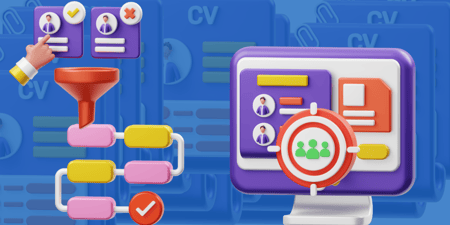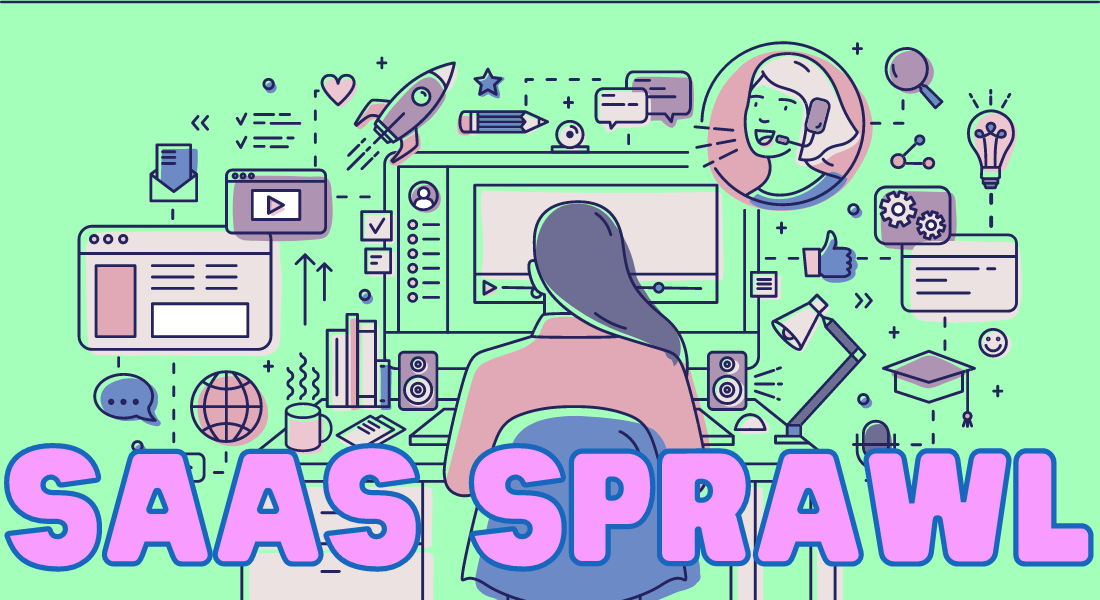Why You Should Invest in (Good) Inbound Marketing
Paid advertising isn't getting any less expensive in today's online marketplace. If paid ads are your only lead-generation strategy, you're not getting in front of the prospects you want to. Traditional paid advertising isn't going anywhere, but to really kill it in the digital economy, you have to embrace inbound marketing.
Inbound Marketing isn't some super-fancy new invention; it's just about bringing customers to you (instead of the other way around). Inbound Marketing is like getting people to see your movie by creating a great trailer. Paid Marketing is like running up to a stranger, shoving a smartphone at them, and hoping they want to keep watching.
So with that in mind, let's look at what we're going to cover in this crash course on inbound marketing:
- What is Inbound Marketing (and Why Should You Care?)
- Inbound Marketing vs. Outbound Marketing
- 5 Steps to Make Inbound Marketing Work for Your Business
- Why Does "Quality" Content Matter for Inbound Marketing?
- How to Leverage Social Media to Boost Engagement
what is inbound marketing (and why should you care?)
 Inbound marketing is about attracting customers with content that's helpful, interesting, and helps them achieve their goals. People don't want their daily lives interrupted when it's convenient for you; they want expert help when it's convenient for them.
Inbound marketing is about attracting customers with content that's helpful, interesting, and helps them achieve their goals. People don't want their daily lives interrupted when it's convenient for you; they want expert help when it's convenient for them.
This approach involves strategies such as content creation, social media marketing, SEO, and email marketing. "Cold outreach" isn't part of any inbound marketing strategy; your email marketing lists only have people who have expressed interest!
When you're putting together your Inbound Marketing strategy, you have to keep your ideal customer profile in mind. These are the people you will be writing and creating for, so knowing who they are is critical. Creating the right content for the right people gets them to engage with you, which is just the start. An engaged prospect is much more likely to become a customer, who is then more likely to become an advocate.
This is where you really start to see some serious ROI; current customers who advocate for you and refer new business. By providing value to your customers throughout their journey with you, they'll generate more quality leads than paid advertising ever could.
Inbound Marketing vs. Outbound Marketing

There are 2 ways to sell something to a customer:
- They come to you and ask to buy your product or service (Inbound), or
- You contact them and then try to get them to buy your product or service (Outbound).
It's easy to recognize when you're the target of Outbound Marketing. It's high-volume, very direct, and comes with the "hard close" mentality. Some of the most common examples include cold calls, cold emails, and broadcast advertising. Let's be clear: these approaches do work, but can be at the expense of a good customer experience.
For example, if a salesperson is tasked with making 50+ cold calls per day, those calls probably won't be very personalized. If you know it takes - on average - 8 attempts to reach a single prospect, it's easy to value quantity over quality.
Inbound Marketing examples can be a little harder to spot because the primary goal isn't getting you to buy today. Inbound Marketers let you take the first step, through something like an e-book download or social media interaction. After you express interest, they work to establish themselves as the authority you'll look to when it's time to buy.
It's a bit of an over-simplification, but the difference between Inbound and Outbound marketing is basically:
- Inbound: Build trust and create value so customers choose to buy with you when they're ready.
- Outbound: Attempt to contact and speak to as many prospects as possible and hope that some are ready to buy.
5 Steps to Make Inbound Marketing Work For Your Business
- Define your buyer personas.
- A buyer persona is a fictional character that represents your ideal customer. Your buyer persona should include info on demographics, interests, pain points, etc.
- Create compelling content.
- Knowing your ideal customer(s) personality means you can now create content that speaks directly to them. There are lots of options here, but popular options include eBooks, blog posts, infographics, videos, etc. Whatever you choose, prioritize quality over everything.
- Promote your content.
- Once you have created some great content, it's time to start promoting it! This can be done on social media, with email marketing, and even with paid advertising. You heard right; your buyer personas allow your advertisements to target interests and traits instead of impersonal keywords!
- Convert leads into customers.
- To do this, you need a strong Sales Process in place and you need to be able to move fast. Research from 2007 showed businesses that contacted leads within 5 minutes were 21x more likely to qualify those leads. The first-ever iPhone launched in 2007; today, you need a near-immediate response to convert.
- Analyze and optimize.
- Marketing without analytics is like trying to drive cross-country without GPS. There's a good chance you'll run out of gas long before getting where you want to go. If you don't have any other options, you can use spreadsheets for analysis, but you're better off with a dedicated platform.
Why Does "Quality" Content Matter for Inbound Marketing?

This is probably the easiest part to answer: low-quality content doesn't engage people or show up in search results.
A poorly-written article isn't going to build trust with your target audience, which means wasted time on your part. Additionally, Google's ranking systems prioritize "helpful, reliable information that's primarily created to benefit people." Because of this, if you aren't creating original, helpful, consistent content that's easy to access, Google won't show people your content.
 This is as good an opportunity as any to mention the (maybe) obvious: it takes time to learn inbound marketing software. For many people, looking at inbound marketing agencies and/or content marketing services will be the smart play. There's no shame in getting help with your inbound content marketing - just thoroughly vet any agencies you're considering!
This is as good an opportunity as any to mention the (maybe) obvious: it takes time to learn inbound marketing software. For many people, looking at inbound marketing agencies and/or content marketing services will be the smart play. There's no shame in getting help with your inbound content marketing - just thoroughly vet any agencies you're considering!
Why Social Media is an Important Part of Inbound Marketing

Like it or not, you need a well-structured social media strategy to be successful with Inbound Marketing. Here's what you should prioritize to make sure your social media supports your Inbound Marketing strategy:
- Keep it Fresh. Don't post and re-post the same content; your audience will get bored and you'll lose valuable engagement. Use different types of content when possible, such as images, videos, infographics, etc.
- Be Responsive. Why build a social presence if you aren't going to socialize with the people that engage with you? Anyone who comments on or likes something you post is a potential customer (or advocate). Take the time to chat with them.
- Use (Good) Hashtags. Do a little research and find out what hashtags are trending and relevant to your company. If you sell cars, you won't get the traffic you want by including "#potatofutures" in your posts.
- Collaborate. Working with brands and influencers who are already popular in your industry is a great way to build engagement quickly.
- Use Paid Advertising (but only if you already have detailed buyer personas!) Advertise with the mindset of "introducing people to the value you offer", instead of "get leads and close them asap".
Summary
It probably goes without saying at this point, but businesses today need a balance of inbound and outbound marketing to grow. If you aren't creating interesting content and using social media in smart ways, you're losing out on customers.
Hopefully, this article's examples of inbound marketing have done a good enough job of showing why your business needs it. It's not just about introducing people to your business; a solid inbound marketing methodology keeps customers coming back.
Making this work for your business will take some time and money, but chances are you can't afford to ignore it.
.png?width=200&height=80&name=lexcan%20simplify%20work%20banner%20v4%20(200x100).png)







